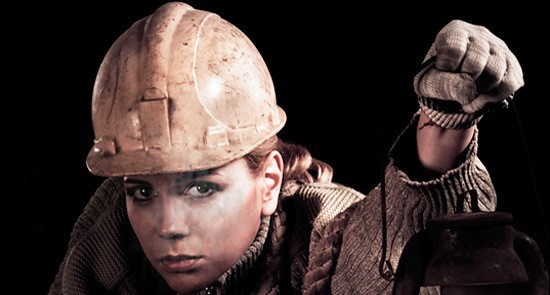
The Australian government and industry professionals have made it clear that more women are needed in the resources sector. So what exactly is being done about it?
Although offering almost endless career opportunities and skyrocketing pay rates, women make up less than 15% of Australia’s mining workforce. Such under-representation can often be put down to long hours, tough physical labour and living in remote communities.
But change is afoot. The Australian Women in Resources Alliance, a project initiative by the Australian Mines and Metals Association, aims to improve the numbers of women in the mining industry, actively promoting an increased attraction and retention of women working in the resources sector.
“It’s forecasted that 90,000 resource industry jobs will be created by 2016, and women have an essential role to play in ensuring these mining, oil and gas projects get off the ground and prosper,” said AMMA executive director Minna Knight. “Through a number of key projects, AWRA is working hard to lift the participation of women in the industry from the current 13.4% to 25% by 2020.”
The money in mining is good. Mining industry workers can take home up to $2000 weekly, with the average salary being about $90,000 a year. Apprentices completing a trade can earn up to $3000 weekly. Beginner truck drivers can earn up to $110,000, while senior employees can take home $250,000 yearly.
Joelene Watts, an open-cut operator with Xstrata’s operation in Mount Isa, says that with no prior training or background in mining, the pay makes the work for her worthwhile. “No matter what gender you are, provided you show skill and interest you can progress in other fields,” said Watts.
Watts added the most challenging part of her job was living in a remote area away from family: “Where I’m currently working they require you to live residentially. Although this is great for families living here, I find that being young and having no family here makes it challenging. Since this is a mining town, flights in and out are expensive, making it harder to visit.”
Knight says steps are being taken to help employers identify gaps in policies and practices at work sites and by providing support to facilitate organisational changes, including the “AWRA Way Forward Guides” being distributed across the industry offering employers practical tools to help.
“There are a number of ways resource employers can build on their female workforce, from introducing flexible work practices, to ensuring work villages are built to accommodate women and actively engaging with schools and universities to promote resource industry careers to female students,” she said.
There is still some way to go in attracting more women in the industry. Figures from Graduate Careers Australia show women make up only 18.2% of bachelor of mining engineering graduates. Minerals Council of Australia workforce skills assistant director Chris James says there are critical skills shortage roles in geology and mining engineering.
“As an example, there are currently around 250 mining engineering graduates per year — this needs to be doubled,” he said.
Leaving stereotypical assumptions aside, many roles in the mining industry are gender-neutral, making way for entry-level and higher tertiary roles available for women. There are a range of jobs available, including scientific, business, trade-based roles, as well as a need for qualified support staff such as psychologists. Hard-hat roles, including dump truck drivers, as well as cleaners, hospitality staff, engineers and project managers are just some of the endless career opportunities for women in the resources sector.
The industry also knows that getting women into mining is good business. NSW Minerals Council spokesperson Lindsay Hermes said: “The more women we can attract into the industry, the more the industry will change to accommodate us. It’s not political correctness, it is a good business — and that is exactly what the mining industry is.”
*This article was originally published at Women’s Agenda







Mining jobs are shit jobs, there is a macho culture and the inhumane rostering leads to psychological disfunction, broken families and broken bodies. Mining hours in Australia breach the International labour Organisation rules on safe working.
Dont go near these jobs with a 3.3 meter bargepole! Oh, by the way, the mine owners dont actually care if you live or die, it doesn’t effect their bottom line.